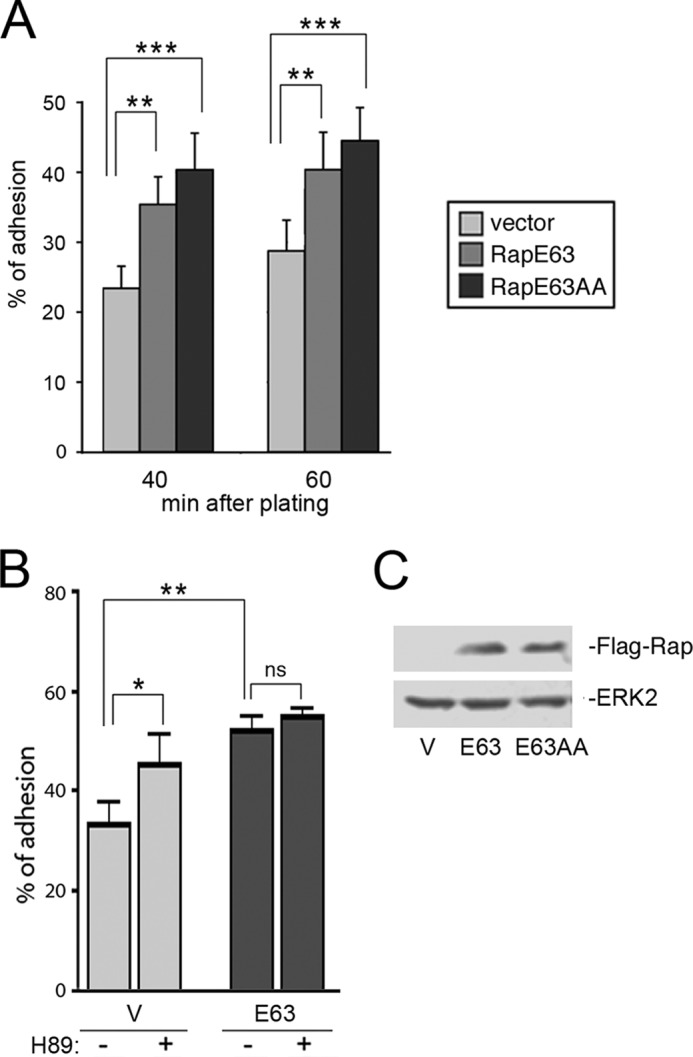FIGURE 7.

RapE63AA and RapE63 stimulate adhesion in H1299 cells. A, adhesion assay. Stably transfected H1299 cells expressing pcDNA3 vector (Vector) or FLAG-RapE63 (RapE63) or FLAG-RapE63AA (RapE63AA) were resuspended and plated in quadruplicate onto fibronectin (1 μg/ml)-coated wells and adherent cells were quantitated as described under “Experimental Procedures.” The values shown are the average of 4 independent experiments, ± S.E. **, denotes statistical significance at <0.01. ***, denotes statistical significance at <0.001. B, adhesion assay. Stably transfected H1299 cells expressing pcDNA3 vector (V) or FLAG-RapE63 (E63) were incubated with H89 40 min before being plated onto fibronectin (1.5 μg/ml)-coated wells and cells were allowed to adhere for 60 min. The percentage of adherent cells were quantitated as described under “Experimental Procedures.” The values shown are the average of 5 independent experiments, ± S.E. *, denotes statistical significance at <0.05. **, denotes statistical significance at <0.01. ns, denotes statistical significance at ≥0.05. C, stable cells lines. H1299 cells expressing pcDNA3 vector (V), FLAG-RapE63 (E63), or FLAG-RapE63AA (E63AA) were stably selected as described. The levels of transfected Rap proteins are shown in the first panel. The levels of ERK2 are shown in the second panel as a loading control.
